Top 5 Secret Hot Spring Inns in Central and Western Japan Recommended by the Hot Spring Association

Enjoy the luxury of natural hot spring water at carefully selected hot spring inns in Gifu, Nagano, Wakayama, Shizuoka and Kumamoto, and immerse yourself in a soothing space filled with history and nature.
In 1975, the Japan Society for Preserving Hidden Hot Springs was founded at the suggestion of Hifumi Iwaki, founder of Asahi Travel Association, the predecessor of Asahi Travel, who coined the term "hidden hot springs." At the time, the society was made up of 33 small hot spring inns in the mountains that were inconveniently located and not even serviced by bus.
Since its founding, the association has pursued the philosophy of "A hidden hot spring that is in tune with the traveler's heart" and strives to provide hospitality that reflects the traveler's heart and the best hot springs to be enjoyed at lodgings. In addition, the association is grateful for the gift of hot springs from the earth and is actively involved in preserving and conserving the natural environment.
Currently, there are over 140 hot spring inns that support the society's philosophy, welcoming travelers with wonderful hot springs and warm hospitality. This time, we have picked out 10 member inns of the Japan Society for the Preservation of Secluded Hot Springs and will introduce them to you. Please use them as a reference for your travel plans.
Shinhotaka Onsen Yarimidate (Gifu Prefecture)
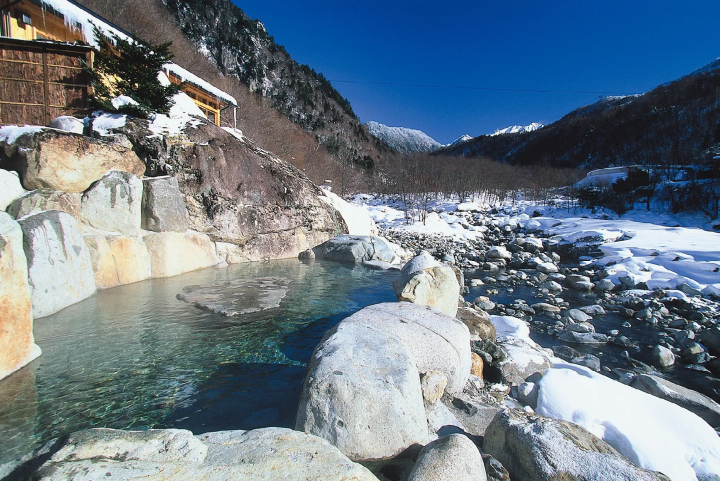
Dinner is centered around local kaiseki cuisine made with seasonal ingredients, and as a designated Hida beef restaurant they also serve Hida beef teppanyaki steaks.
Spring quality: Simple hot spring Baths: Indoor baths = 2, outdoor baths = 7
Hot spring usage: 420L/min. Day trip bathing: allowed (500 yen for adults)
Location: 587 Kamisaka, Okuhida Onsenkyo, Takayama City, Gifu Prefecture
Standard accommodation fee: 18,850 yen to 33,150 yen
Oyumoto Yamada Ryokan (Nagano Prefecture)
This is a historic, well-established inn located in Otari Village, Kitaazumi District, Nagano Prefecture. The inn has two private hot springs, boasting an abundant amount of water at 150 liters per minute. There are two baths: the "Motoyu" bath, which has a retro atmosphere, and the "Outdoor bath" bath, which was built by a master carpenter. The Motoyu bath, located in the center of the building, is open 24 hours a day. The hot spring water is also drinkable, and has long been said to be effective for the liver and diabetes.
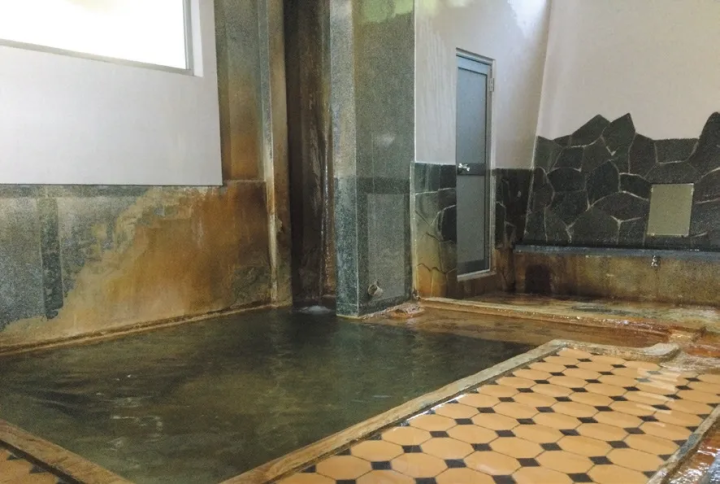
The grounds are home to six tangible cultural properties, including the main building, which was built hundreds of years ago, making you feel as if you've traveled back in time.

Spring quality: sodium bicarbonate spring Baths: Indoor baths = original bath and outdoor bath / 2 for men and women, outdoor bath = observation bath Hot spring usage: 150L/min Day trip bathing: allowed (700 yen for adults)
Location: 18836 Nakado, Otari Village, Kitaazumi District, Nagano Prefecture
Standard accommodation fee: 14,400 yen to 19,900 yen
Yunomine Onsen Azumaya (Wakayama Prefecture)
Yunomine Onsen is an ancient hot spring with a long history, where travelers on pilgrimages to Kumano are said to have come to purify themselves from about 1200 years ago. Standing in this hot spring area is Azumaya, a four-story wooden inn founded around 1800. The hot water poured into the baths comes from the inn's own spring source, and the hot spring minerals float about along with the rich scent of sulfur. In addition to the retro cypress bath, the bath area offers a variety of baths to enjoy, including a steam bath that is said to be the prototype of modern baths, and an open-air bath designed by a professor specializing in Japanese gardens. The special hot spring rice porridge, made using water from the source, is a popular breakfast option that is an edible hot spring treat.
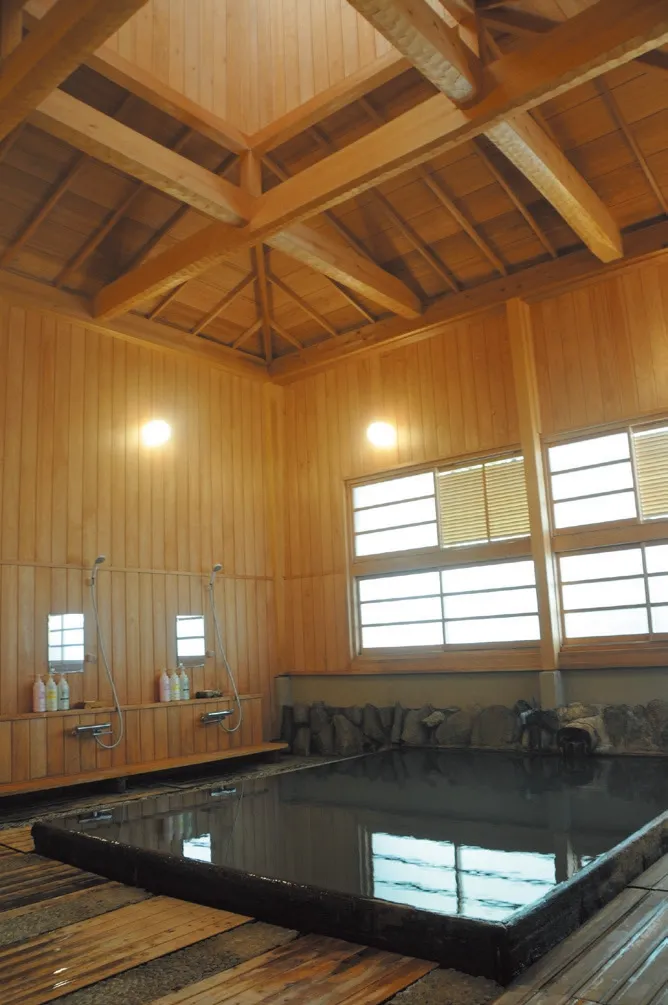
Spring quality: Sulfur-containing sodium bicarbonate chloride spring Baths: Indoor baths = 3, outdoor baths = 1 alternate
Hot spring usage: 70L/min. Day trip bathing: Not allowed. Location: 122 Yunomine, Hongu-cho, Tanabe-shi, Wakayama Prefecture.
Standard accommodation fee: 16,650 yen to 33,150 yen
Kawabata Inn Yumotokan (Shizuoka Prefecture)
This is a long-established inn founded in 1872. It is also known as the inn where Nobel Prize-winning author Kawabata Yasunari stayed for 10 years from 1918 and wrote the novel "The Dancing Girl of Izu." The private open-air bath, which is 100% natural spring water, is designed to evoke the rustic charm of the Kano River that flows right next to it, allowing you to enjoy the atmosphere of a hidden hot spring while listening to the sounds of the mountain stream. In addition to the open-air bath, there is a large public bath that can be enjoyed even at night with moody lighting, a marble "ladies' bath," and a "cypress observation bath" with glass on three sides for an open feeling. The hot spring water flows directly from the source without any added water or heating.
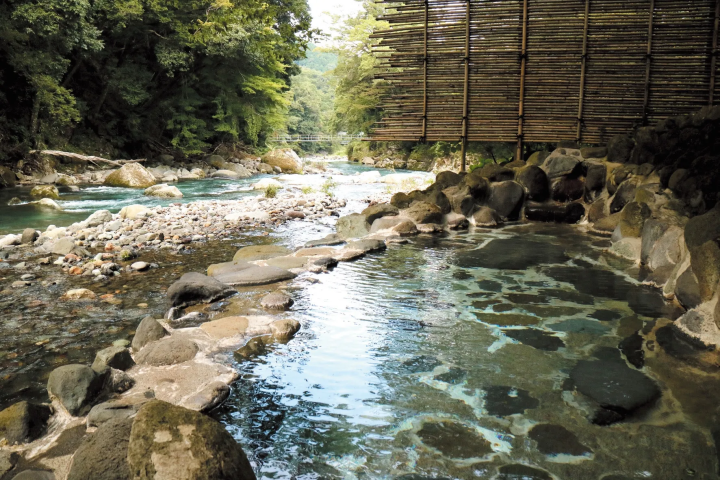
The restaurant serves Japanese cuisine, mainly sweetfish caught in local rivers, Amagi's specialty wild boar hotpot, and seasonal sashimi from Suruga Bay. Yumotokan uses wild boar meat that has little odor, making it easy to eat.
The entrance, which retains a retro atmosphere, will make you feel as if you have entered the world of the novel "The Izu Dancer." At Yumotokan, the room where Yasunari Kawabata stayed has been preserved as it was at the time, and you can see things left behind by Kawabata.
Spring quality: calcium-sodium sulfate spring Baths: indoor baths = 3, outdoor baths = rotation system, private baths = 1
Hot spring usage: 96L/min. Day trip bathing: △ (may not be available, 800 yen for adults)
Location: 1656-1 Yugashima, Izu City, Shizuoka Prefecture
Standard accommodation fee: 15,400 yen to 33,000 yen
Yurakutei, a large cave inn (Kumamoto Prefecture)
This is a single inn in a rural area near the beach. The hot springs have two types of water: "white water," which is said to be smooth and gentle on the skin, and "red water," a carbonated spring with high iron and potassium content. The baths are separate for men and women, with two indoor baths and one open-air bath. The inn's specialty is a cave bath about 33 meters long that was hand-dug by the family. The cloudy red water boasts a hydrogen carbonate content of 3,340 mg, one of the highest in Japan, and you can enjoy the unique sensation of your body warming from the inside out. The water also has a heavy texture, which is said to be effective for skin diseases, cuts, and burns.
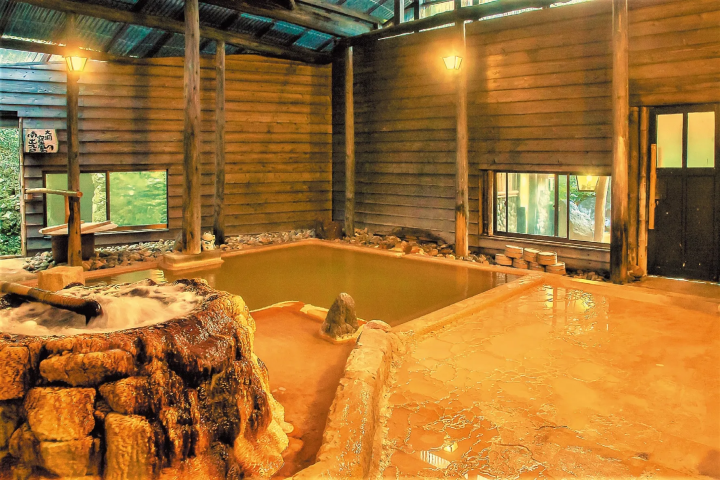
Dinner is a "creative omakase kaiseki" course prepared by the head chef himself, with plenty of seasonal ingredients and fresh seafood from Amakusa. Most of the vegetables served are home-grown without pesticides, and are proud of their freshness and deliciousness.
The Akayu cave baths will tickle your sense of adventure. Carbon dioxide easily escapes at high temperatures, so carbonated springs with a source temperature of 50 degrees are valuable.
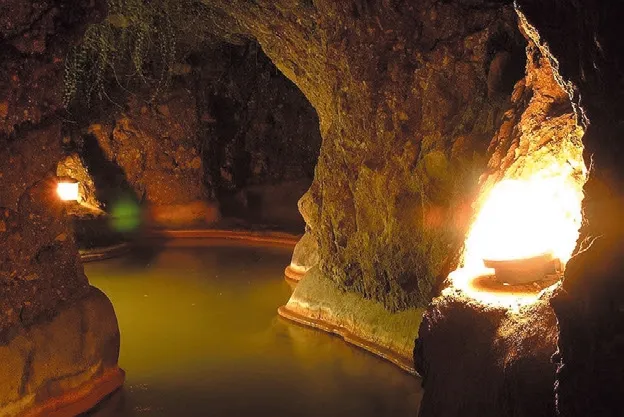
Spring quality: White water = simple spring, Red water = carbon dioxide-containing sodium chloride bicarbonate spring Baths: Indoor baths = 4, outdoor baths = 2, cave baths = 2
Hot spring usage: White water = 40L/min, Red water = 227L/min Day trip bathing: △ (800 yen for adults)
Location: 5190-2 Oyanochokami, Kamiamakusa City, Kumamoto Prefecture
Standard accommodation fee: from 17,600 yen
The original text is here:
https://zipangu-tourism.com/posts/stay0116
https://zipangu-tourism.com/posts/stay0117
A web media that introduces deep and nerdy travel information that even Japanese people think they know but don't. It provides information on famous places, gourmet food, and spectacular views from all over the country, along with the history, culture, and traditions of the region. https://zipangu-tourism.com/
The contents on this page may partially contain automatic translation.































![[2026] Top 5 Strawberry Picking Spots in Tokushima, Naruto| Farms and Access Guide for January to May](https://resources.matcha-jp.com/resize/720x2000/2025/03/06-227165.webp)



